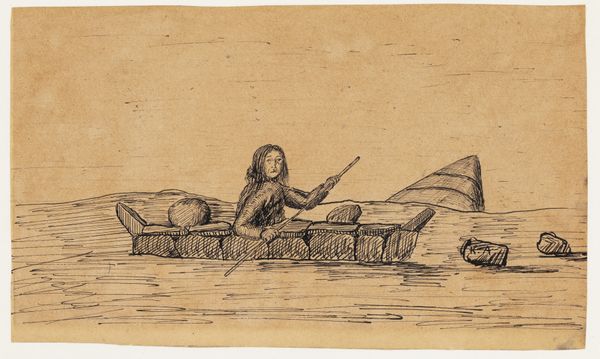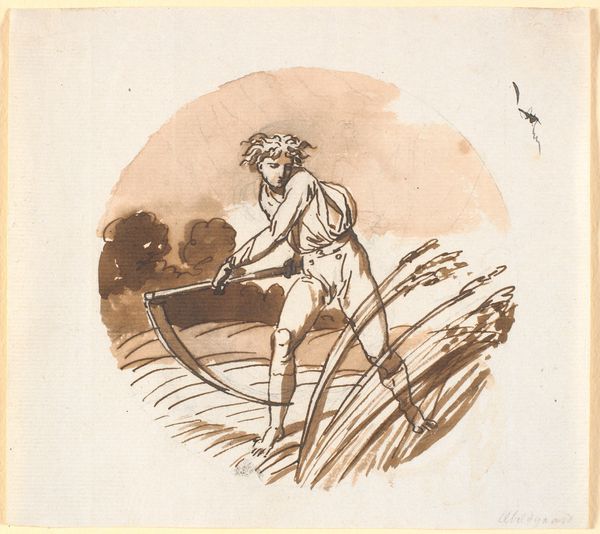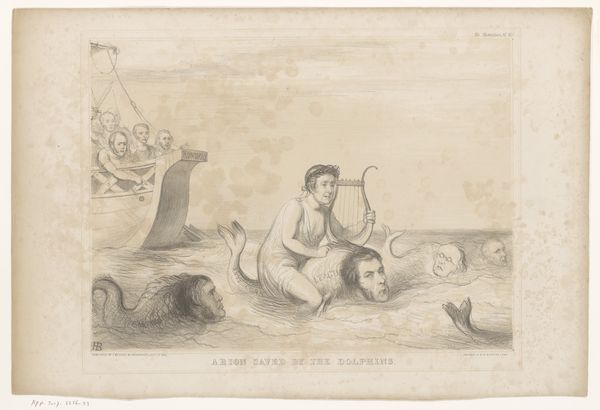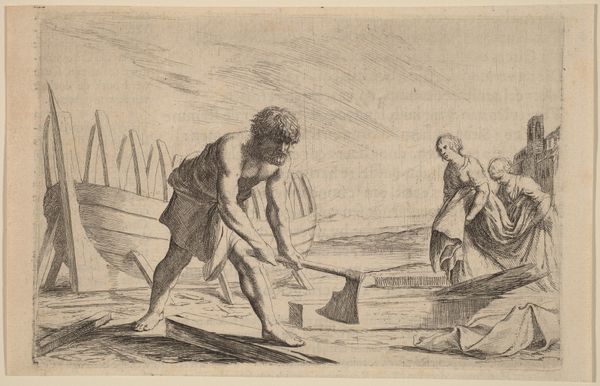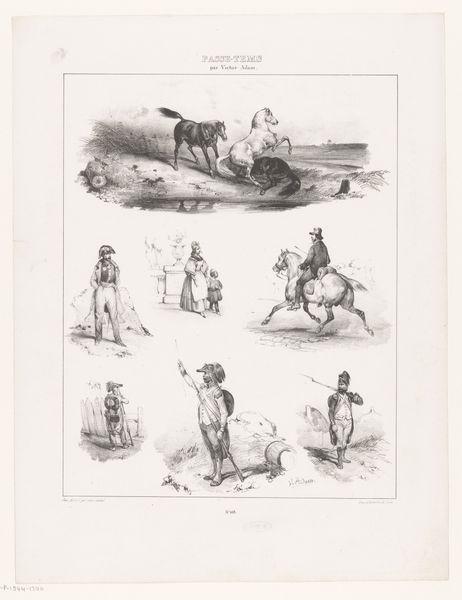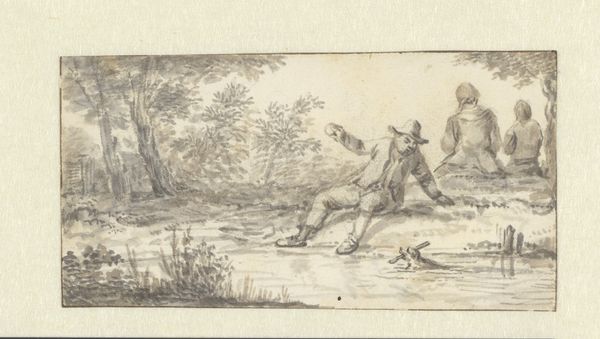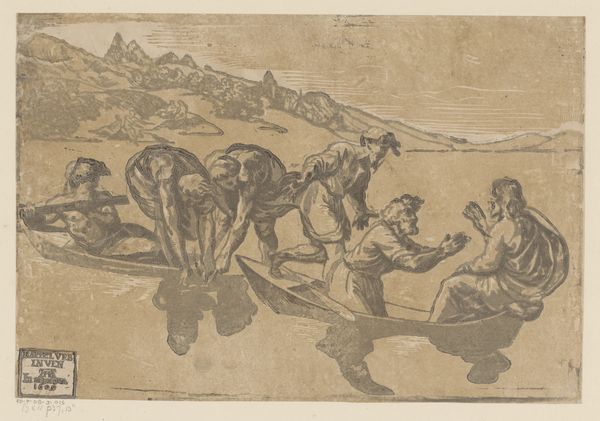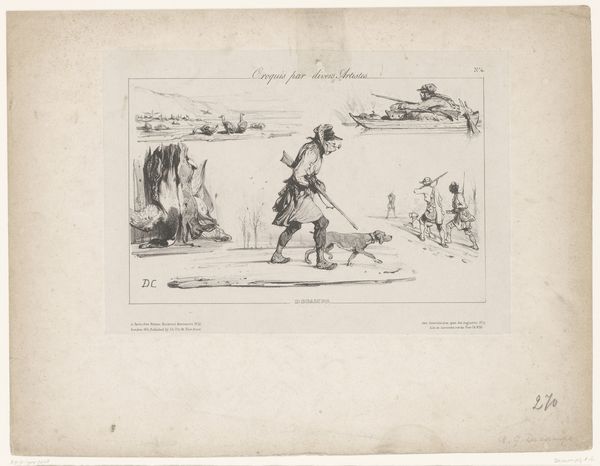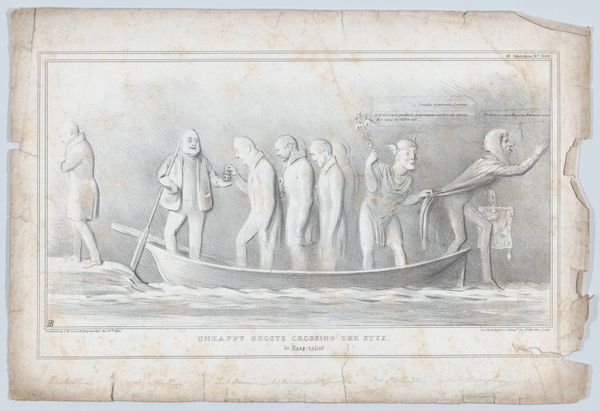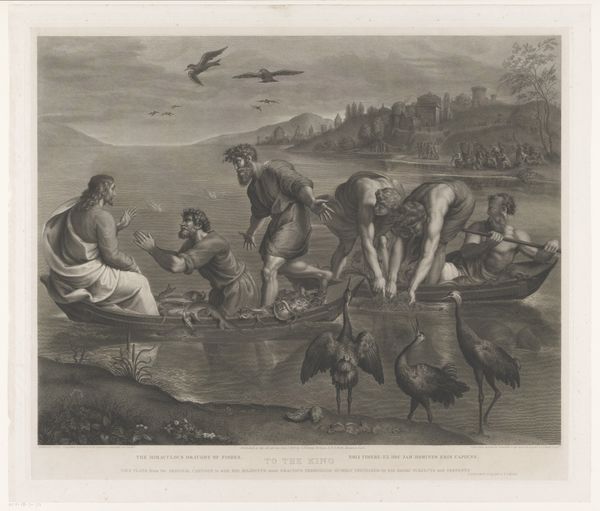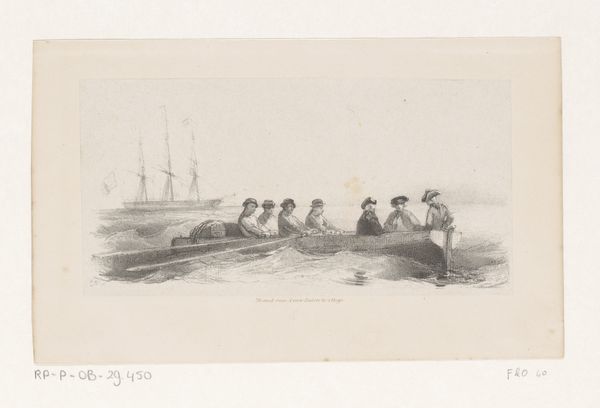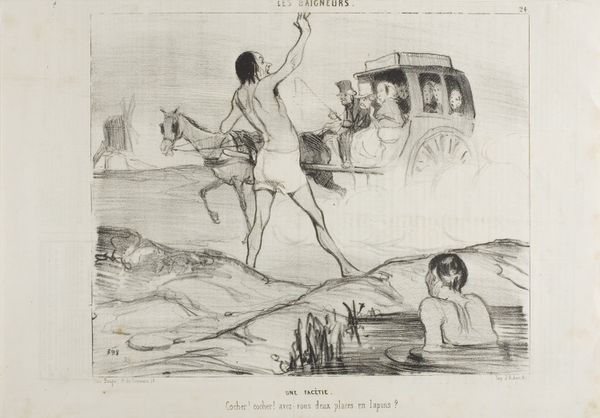
drawing, paper, pencil
#
drawing
#
blue ink drawing
#
narrative-art
#
landscape
#
figuration
#
paper
#
romanticism
#
pencil
#
sketchbook drawing
#
watercolour illustration
#
genre-painting
Dimensions: height 206 mm, width 327 mm
Copyright: Rijks Museum: Open Domain
Curator: This drawing, entitled "Arbeiders met pieken, vlet en houtvlot," translates to "Workers with Peaks, Flat-bottomed Boat, and Wood Raft." It’s attributed to Jan Brandes, and scholars place its creation sometime between 1788 and 1808. Editor: It's remarkably understated for Romanticism. My first thought is how muted the scene is, almost monochromatic, emphasizing the physical labor. Curator: Indeed. Brandes' works often depicted everyday life, reflecting the rising interest in genre scenes and narratives among the middle classes. The muted tones and simple composition direct focus on the working class and their modes of transportation along the waterway. Editor: Yes, and look at how the materials themselves seem to dictate the forms. The pencil and blue ink—their properties are quite evident here. It is about how resources and manual strength were fundamental to river transport. There is little flourish, and instead there is a raw kind of energy coming off of this piece. Curator: I think you make an important point. During this era, we start seeing an interest in depictions of labor as worthy subjects in their own right. The Industrial Revolution, even in its nascent stages, impacted artistic representations and the role these folks occupied in an emerging social order. Editor: To see the men physically straining to move that boat emphasizes not only their labor, but also its limitations. Before mechanization, their physical strength was their primary tool, made so evidently. I think there’s a certain inherent vulnerability captured in these strokes. Curator: You are right, the image quietly challenges notions of progress by subtly demonstrating the arduous reality behind even seemingly simple transportation. Brandes presents a snapshot of a society on the cusp of significant changes, one still largely dependent on the strength of men. Editor: Seeing it now, through that historical frame really does highlight the beauty found within these practical skills. It is a document and reflection of physical necessity. It is compelling how he honored a collective spirit through such spare representation. Curator: I agree. By examining the subject of work and its social implications during this period, Brandes effectively captured a transitional time, providing a unique perspective on the cultural landscape of late 18th and early 19th century life. Editor: And appreciating how he achieved that—primarily using pencil, ink, and paper—further enhances our understanding. Recognizing these materials as significant in their own right opens up further areas of inquiry to see, for example, how resource and materiality intertwine, deepening our respect for the subject.
Comments
No comments
Be the first to comment and join the conversation on the ultimate creative platform.
